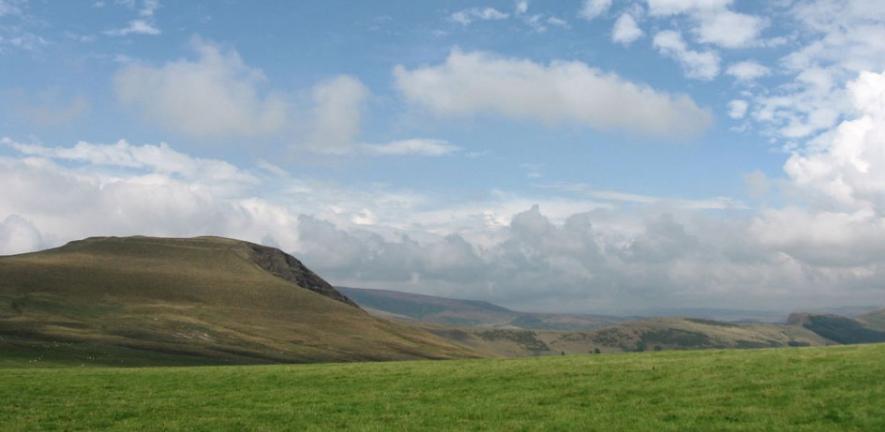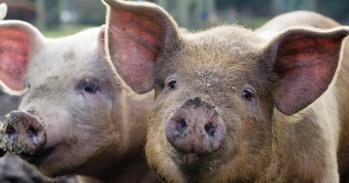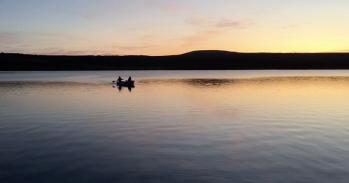
Are there any wild places left in Britain and Ireland? Robert Macfarlane has travelled in search of them, reflecting on the meaning of ‘wildness’ and the nature writing tradition.
Are there any wild places left in Britain and Ireland? Robert Macfarlane has travelled in search of them, reflecting on the meaning of ‘wildness’ and the nature writing tradition.
What I came to understand, however, is that in England, wild places still exist – but on a small scale, and opportunistically.
Dr Robert Macfarlane
Time and again, I had read obituaries for the wild. To the American author William Least-Heat Moon, for instance, Britain had become ‘a tidy garden of a toy realm where there’s almost no real wilderness left and absolutely no memory of it.’ I didn’t want to believe these reports of the death of the wild, however. They did not square with my academic teaching on the subject of ‘nature writing’. Nor did they square with my personal experiences of our archipelago: its ecologies, its natural histories, its geology and its weathers.
So I began a series of journeys around Britain and Ireland, to see what wild places still remained, and to explore the meanings and histories of ‘wildness’ in the context of different terrains and nations. I travelled widely – from the cliffs of Cape Wrath, to the holloways of Dorset, the storm beaches of Norfolk and Suffolk, the salt marshes of Essex, the moors and tors of Rannoch and the Pennines, the estuaries of Sutherland, and the sea caves of West Wales and Ireland.
At the beginning of my journeys, I decided – to come closer to whatever wildness was left – I would try to travel ferally. I would walk, swim and climb through the landscapes and seascapes I reached. I would sleep out wherever I could. I would travel in all four seasons, by night as well as by day, and in all weathers: high sunlight, rainstorm and blizzard. I would try to find new logics of motion – to follow the migratory paths of birds, the tracks of deer and the flight paths of bumblebees, and to see what came of these pursuits. And I would seek the company of native guides: people who had lived in those landscapes for many years, or come to know them intimately as scientists, artists, shepherds, or foresters.
I wanted, in short, to find new ways of approaching this much travelled-in, and much written-about, archipelago. Ways of ‘coming at the landscape’ – as the Georgian travel writer Stephen Graham once memorably put it – ‘diagonally’.
Reader, I had a lot of fun. I spent nights on cliff tops and on distant beaches, and in snowy woods, on peaks and pilgrim islands. I climbed winter mountains in moonlight so bright I could read by it, I walked up frozen rivers, and I bathed at midnight in flaring phosphorescent seas – purple! gold! silver! – off the Lleyn peninsula. I researched and wrote about the histories of Celtic monks, Wittgenstein’s love of Connemara, and the Catholic recusancy in Dorset. I watched a red sun rise over an England that could have been Antarctica, and I slept in a shearwater colony (noisy), and in the flight path of thousands of migrating geese (exceptionally noisy). I got cold, high, lonely, hot, tired, low, wet – and most often of all, very happy.
Nature writing
The book I have written – The Wild Places – is an account of these journeys into the wild, both as place and as concept. It isn’t, as you will have gathered, an academic monograph. I’m not really sure what to call it: it mixes travel writing, natural history, geology, geography and memoir. ‘Nature writing’ is probably the easiest description: a great deal gummier is ‘autobiopsychogeography’, a recent academic coinage for such hybrid travelogues.
I have research interests in the relations between ecology, environmentalism and literature, and I lecture at undergraduate level on the theory of ‘ecocriticism’, as well as on the varieties of nature writing – the worshipful visions of Barry Lopez’s Arctic Dreams, the pentecostal naturalism of Cormac McCarthy, and more recognisably lyric poets such as Robinson Jeffers and Alice Oswald. In short, the book both informs, and is informed by, my teaching within the Faculty of English.
The idea of the wild
What is wildness, though? When I began my research, I thought I knew what the word meant. To me, its obvious cognates were ‘remoteness’ and ‘inhumanness’, and geographically speaking, wildness was restricted to the high altitudes and high latitudes of the country. Places that were, to borrow a phrase from the controversial 1964 American Wilderness Act, ‘untrammeled by man, where man himself is a visitor who does not remain.’
The more I travelled, however, the more it became clear that such a definition was inadequate. It took no account, for instance, of the dark historical events (the Irish Famine, the Scottish Clearances) that had left these northern and western landscapes ‘remote’ or ‘depopulated’. It also propagated an unhelpful opposition between ‘culture’ and ‘nature’. Everywhere I went, I found evidence of human life, past and present: fortifications, paths, dwellings, agricultural and industrial works. The wild and the human have braided together in these islands for millennia, and any attempt to separate them conceptually, I have come to think, is a category-error.
The unofficial countryside
The greatest change in my understanding of wildness concerned scale. My first journeys were all to the big spaces of the north and west. It was with reluctance that I turned back south, into urbanised England.
What I came to understand, however, is that in England, wild places still exist – but on a small scale, and opportunistically. Wildness is there, if carefully looked for, in hedgerows, in river valleys, and in copses and spinneys. It is there, too, in the interzones and rough cusps of the country – quarry rims, abandoned railway sidings and motorway verges (places that the great natural historian Richard Mabey has described as ‘the unofficial countryside’). This nearby nature is even there, I eventually discovered, in a tiny fragment of beechwood a mile from my city home in south Cambridge. It was in this beechwood that both my journeys and my book ended.
I finished my research uplifted and depressed. Depressed, because wherever I had been I had seen evidence of damage: pollution, marine debris and climate change. Natural England’s recent report Tracking Change in the Character of the English Landscape assessed 40% of English landscapes to be degrading in terms of biodiversity and other ecological indices.
Uplifted, though, because wherever I went I also found evidence of a fierce human love for wildness and nature. I once gave a lecture on the idea of the wild at the Wesleyan Chapel on Christ’s Pieces, Cambridge, and mentioned the beechwood near my home. Afterwards, an 86-year-old lady came up to me. She told me how, in the 1940s, she had taken cub scouts up into that beechwood, to camp overnight and boil tea in their billycans. ‘For us,’ she said, ‘it was somewhere to have adventures, and see nature happening. A really wild place.’
For more information, please contact the author Dr Robert Macfarlane at the Faculty of English.
This work is licensed under a Creative Commons Licence. If you use this content on your site please link back to this page.





